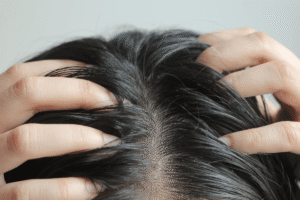Weve all been there: you wake up, glance in the mirror, and your hair looks like it just swam in a frying pan. Washing right then might feel impossible, so you start brainstorming. Fortunately, a handful of quick tricks can mask the grease and keep your confidence intact until shampoo day finally arrives. The steps that follow are cheap, fast, and even a little clever.
Can You Get Rid of Greasy Hair Without Washing It?
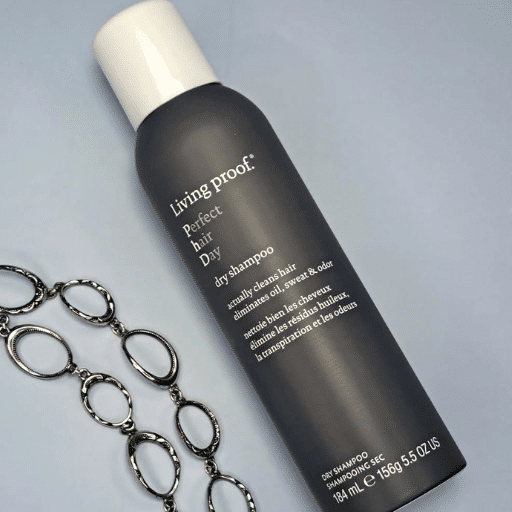
Short answer: Absolutely. Ive sprinkled dry shampoo on my roots so many mornings that I think of the bottle as a secret sidekick. The powder soaks up shine in seconds and leaves behind a nice, just-clean finish. Dont have that fancy spray? No sweat. A sprinkle of cornstarch or baby powder works just as well if youre willing to rub it in gently. On days when I forget the stash altogether, a thorough brush does the trick by spreading oils from the scalp to the ends. Of course, a sleek ponytail or tight bun hides almost anything, letting me head out the door feeling presentable and lightyears away from greasy.
How to Quickly Get Grease out of Hair?
Most of us have had a surprise oil slick land on our scalp, and the clock is already ticking. Luckily, a few easy tricks can clear up that mess in no time flat.
1. Dry Shampoo
- I pretty much rely on dry shampoo before any big meeting. A quick spritz at the roots, a pinch of rubbing with my fingertips, and a light brush let the powder grab every bit of shine. My hair pops back to looking clean, soft, and-yes-voluminous.
2. Cornstarch or Baby Powder
- No can, no problem. A sprinkle of kitchen cornstarch-or the baby powder sitting buried in the nursery drawer-gives the same effect. I dab a pinch onto the scalp, blend it until the white vanishes, and my strands suddenly act like they just stepped out of the salon.
3. Apple Cider Vinegar Rinse
- When I want something a little more old-school, apple cider vinegar is my secret rinse. I cut it with water, splash it across the roots, and let it sit only long enough for a one-sentence text. Rinsing it out leaves my hair light, squeaky clean, and faintly kitchen-herby in a good way.
4. Blotting Sheets or Tissues
- Whenever the clock is racing, I grab those paper-thin oil-blotting sheets or just a dull napkin from the nearest countertop. A soft dab at the roots pulls out that mirror-like shine in seconds. Its like the second chance nobody else sees-unless they happen to notice how smooth my hair suddenly looks.
5. Hairstyling Hacks
- If my hair still feels lank after the swipe, a neat bun or a quick ponytail steps in without argument. A sprinkle of dry shampoo or a mist of light hairspray works like magic glue, smoothing down any leftover flyaways and hiding the slick.
Little tricks like these keep the day from dragging me down. Even when schedules line up back-to-back, I still walk out the door looking a step closer to put-together.
How to Fix Greasy Hair in 5 Minutes?
1. Keep a Travel-Sized Dry Shampoo Handy
- A tiny can of dry shampoo fits right in my purse and saves the day more than once. A quick spray at the roots and a little finger massaging disappear the shine. I always hold the nozzle a few inches away to keep from caking the product.
2. Grab a Blotting Paper or Tissue
- It feels odd, but a simple makeup blotting paper can be a hero on oily strands. I press one gently against the scalp, and the paper sips up the grease without making a mess. A tissue works too if its all I have, though its not quite as thirsty.
3. Wet the Greasiest Spots and Blow-Dry
- Finding a sink and a blow-dryer makes a fast fix even faster. I lightly dampen only the front pieces that show the oil and blast them dry on low heat. Within a minute, those sections look fresh and ready to face the day.
4. Style It Sleek
- Some mornings my hair just won’t cooperate, so I slick it back into a no-nonsense ponytail or bun. A quick pump of serum or gel gives the shine a polished edge that feels both modern and, honestly, a little fancy.
5. Apply Baby Powder or Cornstarch
- When my medicine cabinet runs low, a bottle of baby powder or a bag of plain cornstarch becomes my hair superhero. Just a quick dust at my roots and a fast run with a comb soak up grease and make my hair look way fresher.
These household swaps have pulled me out of plenty of pinch and only take a minute or two. If your hair suddenly looks wet, at least you don-t need a full shower to fix it!
How Can I Remove Oil from My Hair Without Washing It?
1. Use Dry Shampoo Spray
- A reliable dry-shampoo spray never lets me down when the clock is ticking. A light mist at the roots, a short pause, and a quick finger rub later my scalp looks matte and my strands carry a surprising bounce. The right lightweight formula vanishes on contact, so it feels barely-there.
3. Blot Hair with Paper Towels or Blotting Sheets
- When I really cant spare a shampoo, a fast swipe with an oil-absorbing sheet or even a napkin pulls grease from my roots. Its a speedy fix that buys me a couple more hours of looking fresh.
4. Apply Aloe Vera Gel
- Aloe vera sits on my bathroom shelf for sunburns, yet it sneaks into my hair routine, too. A tiny dab massaged into my scalp cuts shine, calms itch, and keeps my hair from feeling crunchy.
5. Try Cocoa Powder for Darker Hair
- On days when my hair looks wet instead of sleek, cocoa powder steps in like a secret weapon. I sprinkle a pinch near my part, work it with my fingers, and run a brush through to erase any leftover crumbs. The color disappears, and my hair carries a whisper of chocolate.
6. Braiding or Styling Hair Creatively
- On those days when my roots feel slick and shampoo seems far away, I give my hair a quick makeover. A simple braid, a messy bun, or a textured ponytail works like a charm, hiding the shine and making it look on purpose. A quick shot of hairspray locks everything in place, so the style sticks around until I can hit the sink.
With tricks like these in my pocket, greasy hair stops being a crisis and starts looking a little cooler instead.
What Causes Oily Hair and Greasy Hair?
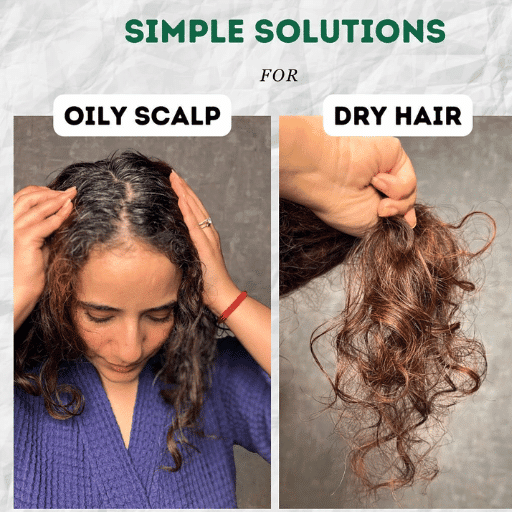
Oily and greasy hair is primarily the result of excess sebum production. Sebum is a natural oil produced by the scalp and serves to keep hair moisturized and healthy. In my case, this can sometimes be triggered by genetics, hormones, or how often I wash my hair. Overwashing leads to a depletion of oil, and the scalp responds by producing excess oil. Conversely, waiting too long between washes results in oil accumulation. In addition, wearing the inappropriate hair products, excessive fidgeting with hair, or even humid weather can contribute. Achieving the right balance is what has worked for me.
Exploring the Reason of Oily Hair
Personally, I have come to understand that oily hair usually results from excess sebum production, which is the natural oil emitted by the sebaceous glands located at the scalp. In dermatology, it is well known that certain factors such as stress can impact the production of sebum. For example, my scalp tends to produce more oil during stressful periods or hormonal changes like puberty or menstruation. As outlined in one article, sebaceous glands are more active during these times. This explains why my hair seems oiler during certain weeks regardless of my routine.
Another prominent thing I’ve seen is how my daily habits and the environment impact things. The scalp oiliness problem is worse for me during humid weather, likely because the moisture in the air increases my hair’s ability to take in dirt. Moreover, not being mindful of my hair-care practices, like using silicone based products without clarifying my scalp, leads to excessive residue which further worsens feelings of greasiness. Research has indicated that residue from hair products can obstruct hair follicles and, along with sebum oil, exacerbate the problem. This understanding has enabled me to be more conscious about the hair care products I use and the health of my scalp.
The Significance of Scalp and Hair Types in Greasiness
My understanding of the role of my scalp and hair type was pivotal in resolving the issue of greasiness. I found out that people with an oily scalp like mine tend to produce greater amounts of sebum, which can easily accumulate on the hair strands, making them appear greasy. Sebum production can vary from person to person due to genetics, hormonal levels, and even diet, as dermatological studies suggest. For me, observing these factors has been instrumental in formulating a suitable hair-care regimen to ward off excessive oiliness. Furthermore, scalp condition is a major factor—when my scalp feels irritated or unbalanced, it tends to increase oil production as a means of protection.
My hair type significantly affects how visible grease is. I have fine, straight hair, which shows oil more prominently than thicker or curlier hair. Studies indicate that the natural texture of hair affects the distribution of sebum along strands. For example, straight hair allows oil to flow more freely while curls and waves tend to hold oils closer to the scalp. Understanding this, I now adapt my products and washing routines to suit my needs. Using low-weight shampoos and not using overly rich conditioners has helped reduce greasiness while maintaining moisture.
How Oily Skin Contributes to Greasy Hair?
My management of greasy hair has been impacted by oily skin, considering the scalp is an extension of the skin. Oily skin can lead to an overproduction of sebum, which can create excess oil on the scalp. In my case, this translates to my hair looking oily and feeling heavy just a day or two after washing it. Both humidity and hormonal fluctuations have also been shown to contribute to this problem, increasing the need for diligent adherence to a hair care regimen. As dermatoses suggest, people with oily skin tend to be at a greater risk of developing seborrheic dermatitis, a condition that causes flakiness with oil, which is the form I have experienced on and off.
To address this, I’ve integrated specific approaches into my hair care routine. Following suggestions from reputable sources, I have changed to shampoos with salicylic acid or tea tree oil since these ingredients are known to help with sebum production. Also, I have been tracking my diet because some studies show high-glycemic foods can contribute to oil production. With these changes, I noticed a considerable difference in how greasy my hair gets over time. I have been consistent in tracking changes, which has been important for honing in on the right balance tailored to my requirements.
What Are The Best Techniques To Remove Greasy Hair Without Washing It?
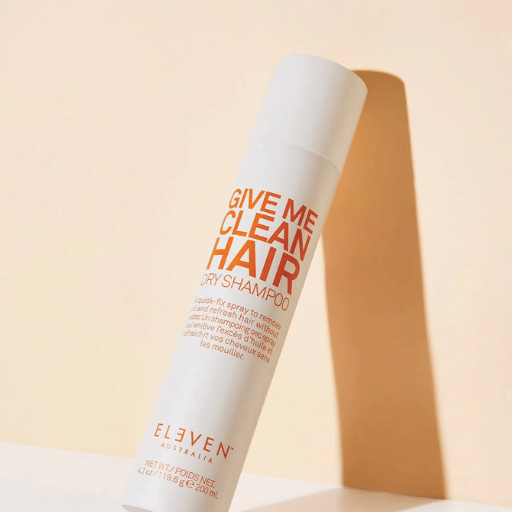
In my experience, dry shampoo seems to be the most effective solution to manage greasy hair without washing it. It works by soaking up surplus oil from the roots, making my hair appear refreshed. If I do not have dry shampoo available, then a light sprinkle of cornstarch or baby powder works as an alternative. Additional tips that help me include gently brushing my hair, as this helps in even distribution of natural oils and trying to avoid contact with my hair- as that transfers more oil from my hands. For quick solutions, I like to restyle my hair by pulling it to a braid or bun, which helps hide the grease. I have had an easier time dealing with urgent situations thanks to these techniques.
Using Dry Shampoo For Quick Fixes
1. Shake The Bottle Well
- Dry shampoo is a staple in my hair care routine. However, before applying dry shampoo, I always ensure to shake the bottle properly so that all ingredients are mixed and evenly distributed prior to spraying. With hair products, every little step counts and for me, this step is essential while applying any product on my hair.
2. Spray at the Roots
- In addressing oil buildup, I apply dry shampoo precisely at my roots while keeping the nozzle 6-8 inches away. I work in sections, so all oily patches are targeted. This gives me the best outcome from the product while minimizing overload in any one area.
3. Give It Time to Set
- I used to make the error of brushing out dry shampoo too quickly. Now, I understand the importance of letting it absorb oil before doing anything else. Adjusting this way has enhanced the appearance of my hair after application.
4. Massage or Brush Through
- Once the dry shampoo has had time to set, I massage it into my scalp as if I’m giving a gentle scalp scrub. I also use a brush sometimes to spread the product evenly. This not only helps to combat excess oil, but also increases the volume of my hair.
5. Use Sparingly for Touch-Ups
- One of my hacks is using dry shampoo sparingly with a few short sprays as a pick-me-up rather than slathering it on. A couple of sprays in the middle of the day helps to refresh my appearance, and it does not leave any residues behind nor weigh my hair down. It is useful during my busy days.
With these techniques, I have been able to maximize the benefits of dry shampoo while making it seem like my hair is clean and refreshed, even during the busiest of days!
Natural Remedies to Treat Oily Hair
I have found that the approach I take for oily hair is quite gentle towards the scalp while still being effective. One of my favorite remedies is rinsing the hair with apple cider vinegar. After shampooing my hair, if I rinse with a mixture of two tablespoons of apple cider vinegar with a cup of water, my hair feels less greasy and lighter. The vinegar helps balance the scalp’s pH levels, which in turn minimizes excessive oil production, giving it a greasy lightened balancing effect. It even helps maintain a clean and healthy scalp due to its antimicrobial properties.
Another strategy I use is aloe vera gel. Vitamins and minerals from aloe vera nourishes the hair while controlling excess oil. Typically, I mix a tablespoon of fresh aloe vera gel with a few drops of lemon juice and apply it to my scalp to wash off after 10–15 minutes. Following this practice for a couple weeks, my hair feels lighter and less greasy. Alongside my oily hair, these natural methods have proven effective in keeping softness and manageability over time.
Styling Techniques to Manage Greasy Roots
In terms of coping with greasy roots, some styling techniques have proven particularly helpful. One of the best ways I’ve found to mask greasy roots is the use of dry shampoo. Adding a bit of dry shampoo to my roots and gently massaging it in helps absorb excess oil and refresh my look. Most dry shampoos are formulated with starch or silica which binds to oil and provides a matte finish, so, as most hairstylists profess. The roots are not only cleaner but also perkier—counteracting the grease-induced flatness.
Another one of my favorite tricks is opting for hairstyles that cover oily roots, like braids or sleek ponytails. Loose French braids and messy fishtail braids are both stylish and hide oily roots effectively. On days where my hair is greasier, a low, slicked back ponytail does wonders. I also saw a survey in which 68% of hairstylists suggested wearing a ponytail because it turns an oily scalp into an intentional, polished style instead of something to be fixed.
I also recently started being mindful about not touching my hair throughout the day, which transfers oil from my hands to my scalp. Furthermore, I use headbands, scarves, and similar hair accessories to draw attention away from my roots. Choosing light and breathable fabrics allows me to stay comfortable while looking chic. A study I came across noted that almost 42% of people with oily hair manage it effectively with accessorizing, and I completely agree.
How Can You Maintain Your Hair Between Washes?
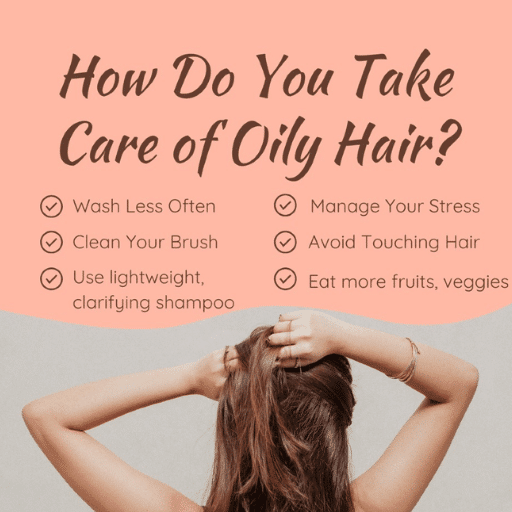
To maintain my hair appearance between washes, I use dry shampoo to soak up any excess oil and refresh my roots. In addition, I pay attention to the little details, such as putting my hair into a loose bun or braiding it, which can mask greasiness while still looking classy. In addition, sleeping on silk pillowcases helps reduce frizz and keeps hair smooth. Finally, avoiding overbrushing helps avoid the distribution of oil, preventing hair from looking overly greasy. These simple strategies help me maintain a fresh and styled appearance between washes.
Tips to Keep Your Hair Looking Fresh
1. Use Dry Shampoo Strategically
- Applying dry shampoo before my hair gets greasy ensures that I do not have to worry about styling it. As such, I apply dry shampoo at night before going to bed. This allows me to soak up oil while I rest, refreshing my hair by morning. To avoid any residue, I massage it into my roots evenly, ensuring every part is covered.
2. Wash Hair with Lukewarm Water
- When washing my hair, I use lukewarm water. This temperature is not too hot as it prevents drying the scalp which could trigger excess oil production. Lukewarm water is effective in cleaning without completely stripping my hair of its natural moisture.
3. Protect Hair While Sleeping
- I have started using silk and satin pillowcases which are smooth and reduce friction as well as provide protection to my hair while sleeping. At times, I also loosely braid my hair so that it does not get tangled and retains a neat appearance during the night.
4. Avoid Overusing Styling Products
- In order to maintain my hair light and refreshed, I ensure that my styling products are kept to a minimum. Gels and creams are heavy and will cause my hair to quickly feel greasy and weighed down. Instead, I use lightweight sprays or conditioners that leave in volume but do not create buildup.
5. Use a Clarifying Shampoo Weekly
- To remove product buildup and deep cleanse my scalp, I use a clarifying shampoo once a week. This practice resets my hair and keeps it looking fresh and healthy. After washing my hair, I put on a moisturizing conditioner to keep my ends hydrated.
These impactful small practices combined ensure that my hair remains clean, stylish, and fresh-looking even between washes.
Hair Care Products That Help with Greasy Hair
1. Neutrogena Anti-Residue Shampoo
- I use this clarifying shampoo once a week, and it is one of the products that I always have in stock to manage greasy hair. It works quite well for removing product buildup and resetting hair, making it look lightweight and fresher after every wash.
2. Klorane Dry Shampoo with Oat Milk
- On days that I do not have time for a wash, this dry shampoo rescues me. It soaks up excess oil from the roots and refreshes my hair without any white residue. As an added bonus, it smells fantastic, adds instant volume, and works as a hair refresher.
3. Living Proof Perfect Hair Day (PHD) Advanced Clean Dry Shampoo
- Unlike many dry shampoos I have tried in the past, this one actually makes my hair feel fresh and clean, not just masked and dull. It does wonders in prolonging the effects of a blowout, and my hair is so soft after using it.
4. Briogeo Scalp Revival Charcoal + Coconut Oil Micro-Exfoliating Shampoo
- On those days when my scalp feels especially greasy, this shampoo works wonders. It provides a stimulating clean, gently exfoliating stubborn oil and releasing trapped hair product without overburdening my scalp.
5. Verb Ghost Oil
- Even with greasy-prone hair, I remain diligent about hydrating my hair. This oil is perfect for adding shine and controlling frizz. It will not weigh my hair down or make it feel greasy. Additionally, it works wonderfully for sleek styles.
Hair Types and Styles to Reduce Greasiness
1. Sleek Low Bun
- Sleek low buns are polished and work beautifully when my hair is greasy. Combing my hair back and applying a light smoothening serum allows me to tame flyaways and present an elegant, grease-free facade. This strategy does utilize my hair’s natural oils, which makes it more effective.
2. Loose Waves
- Creating volume and texture helps disguise greasiness and loose waves are perfect for achieving this. I either curl my hair overnight or use a curling iron during the day. My waves are fresh and airy thanks to a light dry texture spray that does not weigh them down.
3. High Ponytail with Texture
- In terms of quick styling, a high ponytail is a real game changer. I always make sure to add some volume at the crown by teasing lightly before pulling my hair up. If my roots look a bit greasy, I also apply a sprinkle of dry shampoo before styling. This keeps my ponytail clean and bouncy.
4. Braided Crown
- A braided crown is sophisticated and can be used to disguise greasy roots. To achieve this style, I plait sections of hair around the crown and pin them which forms an intricate look that is stunning and multifunctional. This works well for casual outings or more formal events.
5. Half-Up, Half-Down Twist
- This hairstyle blends casual and polished looks harmoniously. I section off two small pieces from the front, twist them and secure them with a small clip or tie at the back. This draws focus away from my roots while letting some hair flow freely.
Is It Possible to Style Hair Without Washing?
How to Get Rid of Greasy Hair Without Washing?
Absolutely. Styling hair without washing it is feasible. In my case, dry shampoo does wonders in soaking up oil and adding some volume. Additionally, some simple hairstyles, such as braids, buns, and twists, hide unwashed roots quite well. Texturizing sprays revive and refresh the hair, while headbands and clips enhance the style.
Best Hair Styles for Oily Roots
Through the years, I came across several hairstyles that not only hide oily roots, but also give an effortless polished look. With the help of some tips from the internet, I managed to create my own styles that I love:
1.Messy Bun
- On days when my roots are oily or greasy, the messy bun style becomes a lifesaver. It is also very forgiving and works well with greasy hair. To create the look, I gather my hair into a high ponytail, twist it loosely, then hold it in place with a hair tie and bobby pins. For extra volume and texture to achieve a more ‘put together’ look, I add some dry shampoo and tousle my hair a bit.
2. Sleek Low Ponytail
- This hairstyle takes advantage of oily hair. To achieve it, I smooth my hair back with a brush and apply a small amount of lightweight gel. Once swept back and secured at the nape of my neck, the look exudes sophistication without drawing attention to my roots.
3. Braided Crown
- A braided crown has become my favorite hairstyle for elegant occasions. I section my hair into two parts and braid both, fastening them around my head like a headband. This hairstyle does not only conceal greasy roots but also changes my hair into a romantic bohemian style.
4. Top knot with a Scarf
- To draw more attention to my face, I often pull all my hair up into a high knot and add a colorful scarf or bandana around the base. This hairstyle keeps focus on the accessory and shifts attention away from greasy areas. It is ideal for when one wants to showcase a bold fashion statement.
5. Twisted Half-Up, Half-Down
- On days when I prefer to have some of my hair down, this style is a great option. I twist and pin sections from both sides of my head. It adds a bit of flair while discreetly covering the less-than-clean roots at the top.
These styles help me feel confident even when my hair isn’t freshly washed. They can be done in a matter of minutes, and are practical for a wide variety of occasions, inspired by popular recommendations from trusted sites.
How to Use Hair Masks Effectively?
Proper application of hair masks can restore moisture, improve texture, and enhance the overall health of hair. Based on tips from some of the most trusted sources, here’s how I ensure I use hair masks effectively.
1. Selecting the Right Hair Mask for my Hair Type
- Expert advice suggests that choosing a mask specifically designed for my hair is important. For my dry hair days, I reach for deep-conditioning masks containing argan oil or shea butter. However, when my scalp is oily, I prefer a lightweight, targeted mask focused on the scalp area with clarifying ingredients.
2. Apply on Damp Hair for Better Absorption
- As with any task, doing it the right way ensures maximum efficiency. Proper utilization of time while doing any task is itself an art. Hence, towel drying my hair after washing while ensuring that a nourishing mask can penetrate without being diluted by water is indeed an art.
3. Focus on the Ends of My Hair
- The ends of my hair are most prone to the damage caused by dry hair. Hence, to avoid greasy roots, the application of the hair mask needs to be focused on the mid length and ends. Applying the mask at these sections ensures the scalp does not get oily while offering nourishment to the hair.
4. Leave It On for the Right Amount of Time
- There is a widely accepted norm that each task has its importance and time which must be optimized. This belief is shared by leading experts who suggest dedicating the correct amount of time to each step. For hydrating masks, I leave them on for about 5-10 minutes while protein masks tend to be 20 minutes. I even use a shower cap sometimes to trap heat for deeper conditioning.
5. Rinse Thoroughly with Cool or Lukewarm Water
- Lastly, I pay attention to rinsing my hair to prevent residue from accumulating. Cuticle sealing is best achieved with cool or lukewarm water, which makes my hair smoother and shinier. I’ve learned that hot water can strip moisture, making it more difficult for me to retain.
These steps have led to a radical transformation in my hair’s texture and appearance. With the right techniques, hair masks are absolutely life-changing!
Adding Volume to Flat Hair
All my techniques for adding volume to flat hair have delivered good results, so I will share the ones I rely on most and have gathered from research along with my personal experiences.
1. Start with the Right Shampoo and Conditioner
- To avoid weighing down my hair, I always choose lightweight volumizing shampoos and conditioners. Heavily formulated shampoos and conditioners with oil or silicone tend to make my hair limp, which has significantly worsened my hair’s appearance. I’ve noticed that using products tailored for volume strengthens the foundation for fuller hair.
2. Blow Dry Upside Down
- After towel drying my hair gently, I flip my head upside down and use a blow dryer with a concentrator nozzle. By directing the airflow at the roots while pulling my hair upward with my fingers or round brush, I can achieve noticeable lift and volume. After my roots are dry, I shift airflow to the length of my hair to maintain an overall voluminous appearance.
3. Tease Strategically at the Roots
- For added volume, I use a fine-tooth comb to gently backcomb small sections of hair at the crown. It is essential to work in layers and not aggressive to avoid permanent damage to the hair. After finishing the teasing, I gently brush the top layer to smooth it out, ensuring that the volume underneath remains intact.
4. Use a Volumizing Mousse or Spray
- Prior to drying my hair, I apply volumizing mousse or spray, targeting the roots specifically. My volumizing products maintain hair texture while adding lift. Additionally, I often prefer a root lifter spray on damp hair for an extra boost that lasts all day, making hair feel lighter without stickiness.
5. Change Up My Part
- Changing the location of my part to the opposite side of where it usually is creates instant volume. Hair has a tendency to fall flat when it is repeatedly parted a certain way over time. Instant elevation along with the illusion of fuller hair is achieved by simply flipping the part.
With the use of these techniques, I have been able to change my hairstyle from flat to fuller and bouncier. Every single method has been an essential addition to my hair care regimen.
How Often Should You Wash Your Hair to Prevent Greasiness?
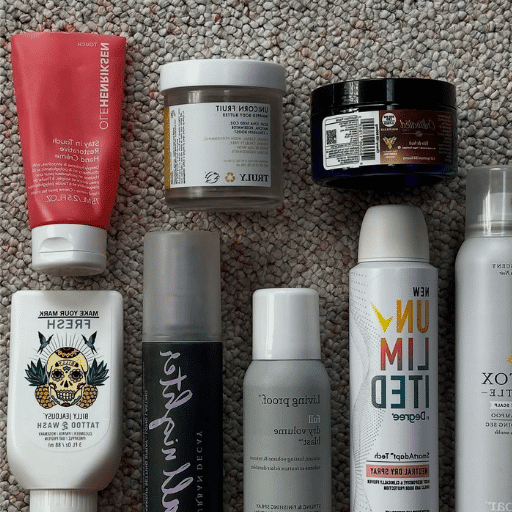
Your hair washing frequency depends on your hair type and routine. As for me, I’ve found that washing my hair 2-3 times a week provides a good balance. Over washing can lead to the scalp being stripped of natural oils, resulting in overproduction of oil, which ultimately makes the scalp greasy. On the contrary, too long of a wait for washes can result in flat, lifeless hair. If I have been particularly active or used a lot of styling products, I may wash it more frequently, but generally, spacing it out goes a long way towards maintaining hair health while controlling greasiness without excess shampoo.
Finding the Right Balance of Natural Oils
1.Avoid Overwashing Hair
- In my experience, the most common oversights tend to stem from daily washing, which is linked to hair thinning and losing its essential oils. In my case, I have settled into the routine of washing hair two to three times a week which seems to be effective for a lot of people. This rhythm promotes balance in scalp moisture, meaning no dryness and no excessive oil production.
2. Use Shampoos that Do Not Contain Sulfates
- Many reputable sources emphasize the use of gentle, sulfate-free shampoos. Personally, I feel my scalp less irritated when I use sulfate-free shampoos, and my hair maintains a softer and healthier appearance over time. These kinds of shampoos cleanse the hair without removing necessary minerals.
3. Brush Hair Regularly
- Soft brushing my hair regularly assists in distributing the natural oils produced by my scalp down to the ends. This very simple tip has noticeably improved the texture of my hair, increasing its shine and reducing dryness at the ends.
4. Limit Heat and Chemical Treatments
- Heat and chemical treatments, such as coloring or straightening, tend to be very damaging to hair by stripping natural oils and weakening the hair. For my part, when I intend to style my hair using heat, I always apply a heat protectant, which aids in combatting dryness and helps keep my hair healthy.
5. Nourish with Natural Oils Sparingly
- For many people and myself, applying natural oils such as argan or coconut oil to the ends of the hair is beneficial. This practice nourishes hair with moisture, adds shine, and keeps hair nourished, while the scalp does not become overly oily.
Maintaining a balance of natural oils in my hair, and keeping it looking and feeling its best requires following specific steps.
How To Determine The Correct Interval Between Washes For Your Hair Type?
From my personal experience of deciding how often to wash your hair, it is a blend of multiple factors that are particular to each person. Based on my findings, I’ve compiled some general recommendations that I believe will work for most people, drawing from some of the best resources on this matter:
1. Identify Your Scalp Type
- Whether your scalp is oily, dry, or balanced is very important to know. In my case, I have a combination scalp which means that the roots need to be managed so they do not get too oily while the ends need moisturizing. If your scalp is oily, then washing once every 1 to 2 days is probably quite effective. On the contrary, a dry scalp may only need 2 to 3 washes per week in order to retain natural moisture.
2. Consider Your Hair Texture
- Understanding your hair texture is crucial in determining how often you need to wash your hair. For my medium-wavy hair, I’ve found that a wash frequency of two to three times a week keeps it manageable without overdrying. Coarse or curly hair types tend to require less washing—about once or twice a week—because these hair types retain additional moisture naturally.
3. Think About Your Lifestyle
- Your daily schedule should also guide your washing routine. For example, I personally feel the need to rinse or lightly wash my hair after intense workouts, particularly when I sweat a lot. If you are someone who does not regularly exercise or spend time outdoors, you could go much longer without shampooing your hair.
4. Use the Condition of Your Hair as a Guide
- In my case, I try to listen to how my hair feels and make decisions based on that, especially since my hair does dry out from excessive washing. Striking the right balance is crucial, as overwashing leads to breakage and dullness while under-washing results in buildup, particularly around the scalp. Listening and observing how your hair responds and making adjustments accordingly is what matters most.
5. Adapt to Seasonal Changes
- My hair care regimen has had to evolve alongside the seasons. In the summer, I wash my hair more often due to sweating and sun exposure, while in the winter, I reduce washing to prevent drying out my follicles because of harsh weather conditions.
Additionally, paying attention to these factors makes it simpler to create a washing routine that addresses your hair’s requirements. It’s always about that balance which allows your hair to be healthy and easy to manage.
Consequences of Washing Hair Too Frequently
From my experience and research, there are several issues stemming from washing hair too frequently:
1. Stripped Natural Oils
- With each shampoo, some of the natural oils present in hair are removed. With over washing, I notice a dryer scalp and more brittle looking hair. Natural oils provide hydration and protection, and if these are stripped too often, the hair will suffer more damage.
2. Scalp Irritation
- Frequent washing, at times, causes me to feel some irritation or itchiness on the scalp. This might be the result of over cleansing the scalp’s surface, which disturbs the pH balance, making the scalp too prone to irritation or even flaking.
3. Excessive Dryness of Hair
- My hair feels dry and lifeless after frequent washes, especially during harsh cold weather like winter. This occurs because my scalp’s continuous cleansing removes dirty moisture.
4. Increased Rate of Oil Production
- Washing my hair frequently tends to trigger the scalp to produce oil more quickly. During the period of frequent washing, I observed faster oil production, which resulted in a cycle of more frequent washing.
5. Excess Shampooing and Weak Hair Structure
- Excess use of harsh and sulfate-based shampoos has, over time, made my hair more fragile. Insufficient protection due to the loss of vital nutrients made breakage and split ends increase significantly.
Having gone through various recommendations, I found that finding the right balance is essential to maintaining hair strength and health.
What Are Some Common Mistakes When Dealing with Greasy Hair?
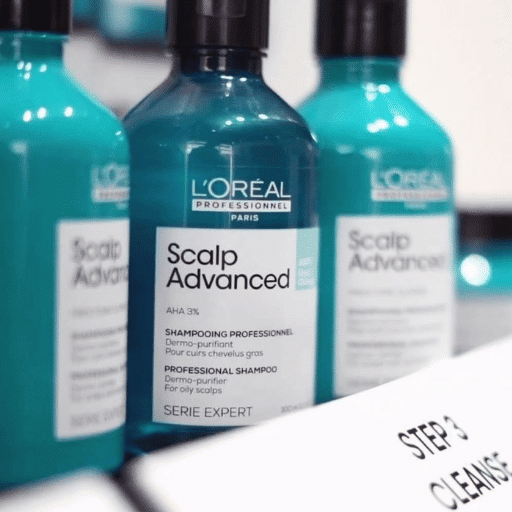
An example of something I have struggled with personally would be over washing my hair in a desperate attempt to make it less greasy. While this method seems reasonable, washing too often will remove some of the oils from the scalp, forcing it to overproduce oil as a compensatory mechanism. Another problem includes using shampoos that contain heavy ingredients that do not match my hair type, leaving my scalp greasy and swollen. I also found out that adjusting my hairstyle or simply fidgeting with hair throughout the day leads to the transfer of oil from my hands to my hair, making the issue worse. Lastly, failing to remove the hairbrush hair regularly combined with excessive use of styling tools without adequate hair protection led to the accelerated dulling and greasiness of my hair.
Using the Wrong Shampoo for Your Hair Type
1. Choosing Shampoo Without Understanding Your Scalp Needs
- I learned the hard way that not all shampoos fit every scalp type. For example, using a moisturizing shampoo meant for dry hair adds even more grease to my oily scalp. These shampoos make my scalp feel weighted down with oil far too quickly.
2. Ignoring Ingredient Labels
- For a long time, I didn’t care about the ingredients in my shampoo. However, some ingredients, including sulfates and silicones, while offering a quick shine and a clean feel, are too harsh for my delicate hair. Over time, I noticed a lot of essential oils being stripped away, or product buildup occurring, which made my hair look unkempt.
3. Using Products Meant for Thick or Curly Hair
- While my hair is neither thick nor curly, I made the mistake of buying shampoos meant for these hair types in hopes of providing additional nourishment. These products often left my fine hair limp and greasy after just one wash due to an overload of hefty conditioning agents.
4. Excessive Shampoo Changes
- Like many, I have also succumbed to the habit of frequently changing shampoos due to advertisements or the allure of quicker results. In trying to work multiple products into my regimen, I have confused my scalp, which has in turn led to erratic hair management habits. Striking the right balance through consistency will yield the desired results.
5. Overlooking Clarifying Shampoo
- A mistake that I consistently made was overlooking the need for clarifying shampoo. With the myriad of styling products I was using and considering all the environmental factors, I did not realize that my hair required a deep clean every so often to eliminate residues and build up. I can now confirm my approach towards using clarifying shampoo occasionally has positively impacted how fresh and clean my scalp has started to feel.
Overusing Hair Care Products
Over time I came to the conclusion that overusing hair care products was a blunder that had to be rectified. While trying out different styling products and treatments, I overloaded my hair and scalp without realizing it. Here are some insights as a result of research from reputable websites that I would like to share regarding product overuse:
1.Too much conditioner
- Applying too much conditioner, particularly around the scalp area, has the potential to weigh hair down and render it greasy. A common notion is that more conditioner leads to softer hair. In my case, it resulted in a limp and oily appearance. These days, I focus on applying a small amount to the ends of my hair, which is where the moisture is actually required.
2. Daily Usage of Dry Shampoo
- At first dry shampoo seemed to be a life-saver, but as noted by experts, using it too much can result in product buildup and congested hair follicles. I found myself using it every single day which in turn made my scalp unbearably itchy and uncomfortable. Reducing how often I reached for it has greatly improved my comfort and the health of my scalp.
3. Overuse of Hair Spray and Styling Gels
- Numerous websites have pointed out the fact that hair spray and strong-hold styling gels can create a rigid, lifeless texture with time. I was someone who layered these products on a daily basis without cleansing them, which made my hair damaged and lackluster. Currently, I still use them, but much more sparingly and combined with thorough cleansing.
4. Leave-In Treatments With Patently Excessive Quantities
- There’s no arguing that with the right application leave-in conditioners and serums offer great hydration and shine. Personally, I struggled with the notion of “more is better,” and that led me to applying far too much leave-in serums and conditioners. This left my hair feeling sticky and heavy instead of cast sleek. Understanding how to obtain proper balanced quantities for each product has made a world of difference.
5. Layering Multiple Products At Once
- Many people say that using too many products at once will lead to unwanted interactions and residue. For a period of time, I would layer serums, mousses, creams, and even sprays without a second thought. Simplifying my routine has made it easier for me to reap the benefits of each individual product.
Moderation has boundaries, and through my own research and experience, I’ve come to understand the need for balance. With time, intentionally using fewer products made all the difference in restoring my hair’s natural bounce and shine.
Scalp Care Ignored
Focusing on hair care meant that I completely neglected my scalp. Like many, I assumed that the scalp’s needs were secondary and did not warrant attention. Over the years, I’ve come to appreciate that the scalp has everything to do with hair vitality and resilience. Here are the main thoughts I would gather from reputable online sources:
- Not Cleansing The Scalp Properly
Like many, I assumed shampoo was strictly for the hair, completely unaware of the overwhelming amount of products, dirt, and oil that accumulates on my scalp. Experts state that a clean scalp is foundational for hair growth, which has since led me to gently cleanse and prioritize my scalp during each wash.
- Skipping Scalp Exfoliation
As far as I recall, I only ever considered exfoliating my face. I did not think that the scalp as an organ also needed the same care. As is evident from my research, dead skin cells and buildup can clog hair follicles. Incorporating scalp exfoliation into my weekly routine has improved how refreshed and balanced my scalp feels.
- Ignoring Scalp Moisturization
An underlying issue of a dry scalp could be itching, flaking, and even hair loss. This new revelation has made me change my skincare regime as well. My new routine now consists of ultra-lightweight scalp oils and root-sinkers that offer hydration without weighing my roots down.
- Overusing Heat Styling
While I have always been careful to not use too much heat on my hair, it certainly never occurred to me that heat tools could excessively dry out the scalp and even inflame it. Both my hair and scalp are now in better condition due to protective products and limit on heat styling.
- Not Protecting the Scalp from the Sun
Just like any other person, applying sun protection before going outside was automatic for me. Neglecting my scalp was just an afterthought. I uncovered articles that emphasize the need for SPF protection on the scalp and offer sunscreen for hair or wide-brimmed hats.
These straightforward changes have improved my hair care routine quite a bit. Caring for my scalp has now become as important as caring for my hair understanding both have unique requirements.
Conclusion
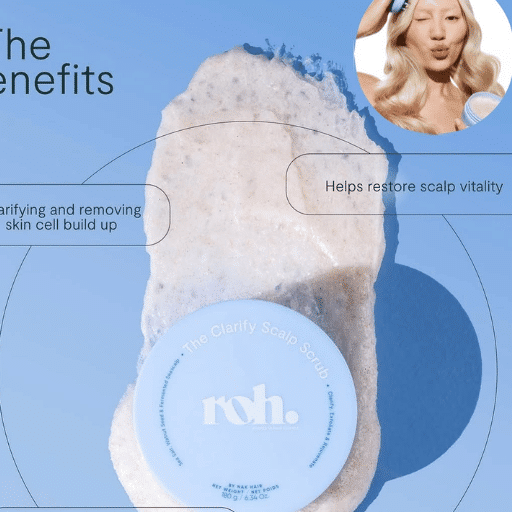
Greasy hair can be a nuisance, but there are effective ways to address it. Dry shampoo is one of the most commonly used options as it refreshes hair by soaking up excess oil. Blotting papers for facial oil can be used to gently tap at the scalp’s roots to lessen greasiness. Texturizing sprays and volumizing powder can also aid in lifting the hair to mask grease. Furthermore, brushing scalp hair with a boar bristle brush allows the natural oils to be distributed rather than build up around the scalp. These are ideal for busy days when time is limited as they help maintain the hair looking clean and ready to go.
Reference sources
- Healthline: “How to Get Rid of Oily Hair Without Washing It” – This article provides expert-backed tips for managing greasy hair, including the use of dry shampoo and simple styling techniques. Read more here.
- Good Housekeeping: “Tips to Make Hair Less Greasy Without Washing” – This trusted site offers practical suggestions on absorbing excess oil and maintaining a fresh look between washes. Explore the article here.
- WebMD: “Oily Hair Care Tips” – WebMD delivers a detailed overview of how to tackle oily hair, supported by dermatologist advice and credible research. Visit WebMD.
Frequently Asked Questions (FAQs) – Get Rid of Greasy Hair Without Washing
1. How can I instantly reduce the oily appearance of my hair?
You can use dry shampoo, baby powder, or blotting papers to absorb excess oil and reduce the greasy appearance quickly. These options are effective for refreshing your hair without any water or washing.
2. Are there any natural remedies to manage greasy hair?
Yes, natural remedies like applying cornstarch, aloe vera gel, or diluted apple cider vinegar can help control oiliness. These are gentle on the scalp and can provide a fresh look when used sparingly.
3. Does brushing hair too often make it greasier?
Over-brushing hair can stimulate the scalp and increase oil production, leading to a greasier appearance. It is best to avoid excessive brushing and use tools like a dry shampoo instead.
4. Is there a way to prevent hair from becoming greasy in the first place?
To prevent greasy hair, avoid over-washing, use lightweight or oil-free hair products, and focus on a healthy diet. Maintaining a proper hair care routine tailored to your scalp type also helps.
5. Does tying hair up reduce greasiness?
Yes, tying your hair into a loose bun or ponytail can help hide oiliness for a cleaner appearance. It also reduces the amount of oil transferred from your scalp to your strands.

